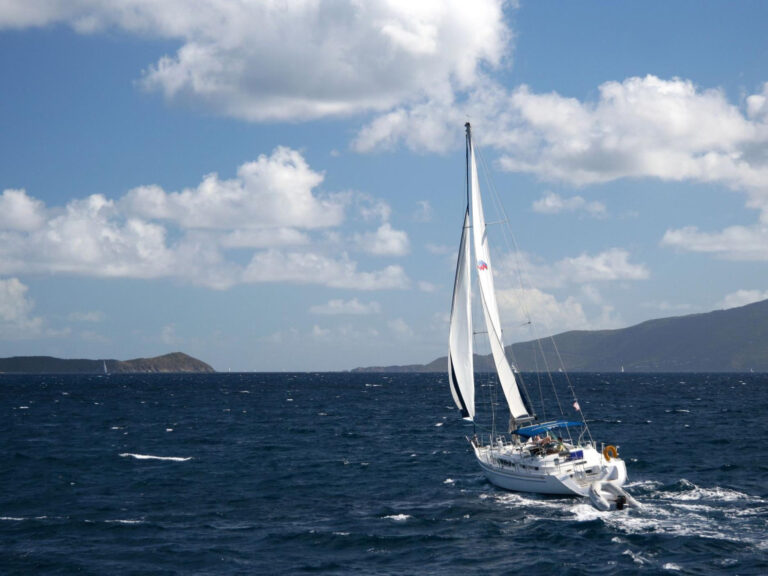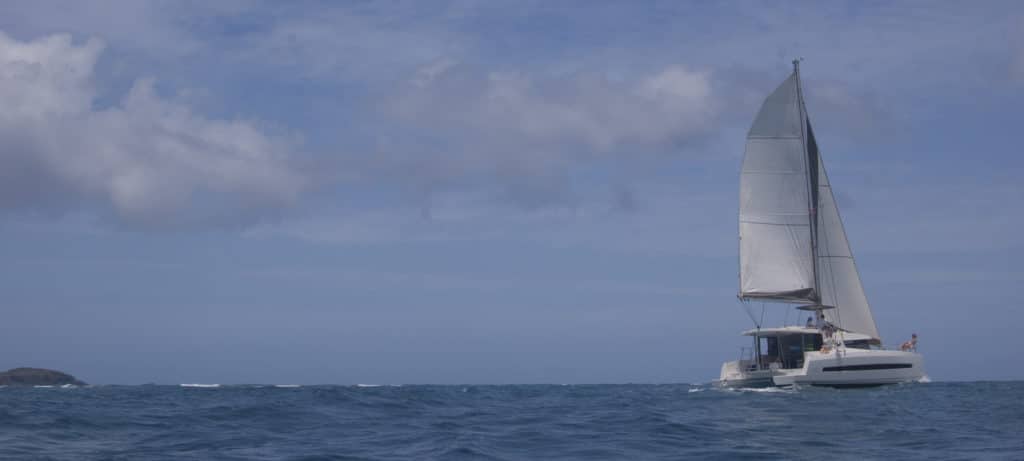
Hans and Jenny packed their cappuccino machine. Marinated tuna steaks. Unctuous T-bones eager for the grill. Caroline packed a pungent Roquefort and a generous slab of raw-milk cheddar. Lesley brought whiskey and a can of real maple syrup she’d picked up in Montreal for just some adventure like this. And as for me, well, lackadaddy, my Guild D-40 dreadnought guitar and my 110-volt All-Clad Belgian waffle maker made the cut. For a kid raised on cribbage by kerosene lamplight and Dinty Moore in a Sea Swing stove — honestly, I left for college with less kit — this was going to be some different kind of sailing trip.
We five had booked a 40-foot Bali 4.0 Lounge catamaran from the new Dream Yacht Charter base in the Puerto del Rey Marina, in Fajardo, Puerto Rico, and in a certain light the feeling of abundance we shared aboard El Golfet might have seemed out of step with the headlines coming from the U.S. territory. During our trip last April, massive strikes were being planned as Puerto Rico’s governor declared a form of bankruptcy to restructure a whopping $120 billion of bond debt and unfunded pension obligations — seven times bigger than Detroit’s $18 billion bankruptcy in 2013, the previous record holder for wipeouts in public-sector solvency.
But news headlines are one thing; life as it’s lived is almost always something else entirely.
Jorge Gonzalez, sales director for the 1,000-slip Puerto del Rey Marina, was making this point on the 45-minute drive east from the San Juan airport, around the El Yunque rainforest, into Puerto del Rey. Raised in San Juan, Jorge had studied at Villanova University in Pennsylvania, gotten married and was well down the path of a promising career at Oracle outside of Boston. But at age 30, he felt the pull and the promise of home — a decision he wrote about in a blog that quickly went viral throughout the territory.
“My desire to move home is fueled, in part, by my desire to raise my newborn daughter near our immediate, and extended, family; by my desire to have a positive impact on society in Puerto Rico; and by my belief that there is a wealth of opportunity in Puerto Rico.”
Jorge, home now for three years and counting, describes himself as bullish on Puerto Rico, and he’s not alone. Again and again, we heard the same optimistic tone about the island’s unsung riches. And over the course of a week of sailing in Puerto Rico’s Passage Islands, we saw for ourselves just what everyone was talking about.
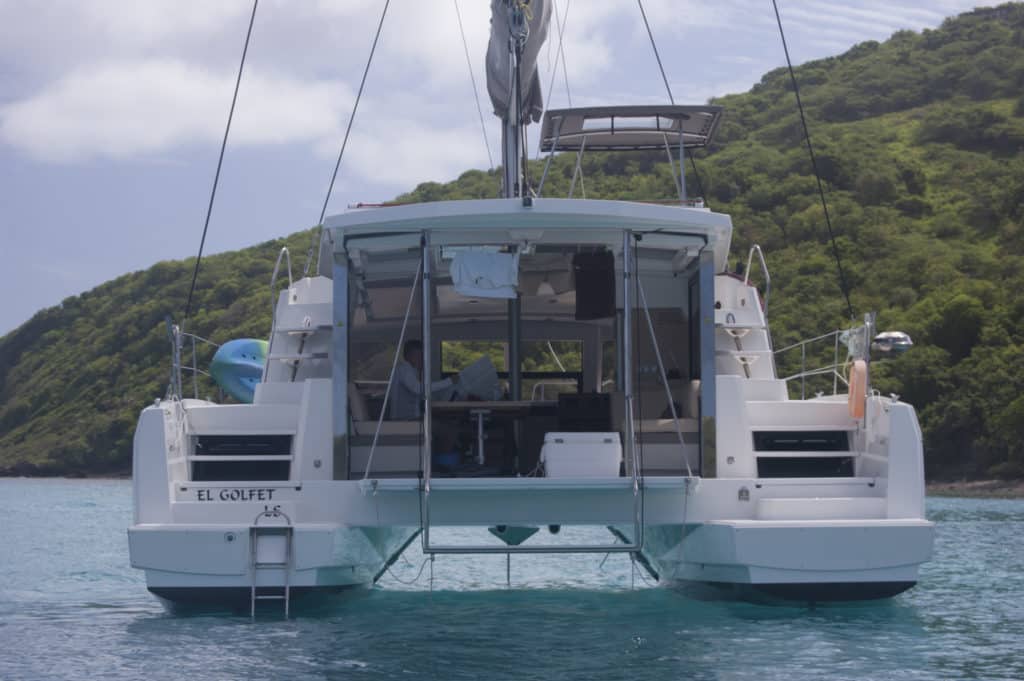
Vieques: Wild Horses and Stars in the Water
By Tuesday morning, day three, our crew had found the stride that would carry on through all of our weeklong charter. We were anchored off Esperanza, the sleepy second town of Vieques — two grocery stores, a half dozen restaurants and bars, and wild paso fino horses, gentle but feral, wandering down the main-street malecón. Hans Evers and Jenny Gifford had spent the morning exploring Cayo Real by kayak, by foot, and by mask and snorkel; Lesley Davison and Caroline Broderick took a horseback tour with Esperanza Riding Company (ERC, 787-435-0073, esperanzaridingcompany.com) on the beach and up into the hills. Everybody was talking at once.
“My horse was Rico,” said Caroline.
“Mine was Pepe,” said Lesley. “Then there was Joe. Slo-Joe, or Go-Joe.”
“Mostly Slo-Joe,” said Caroline. “But they were such good horses. Really responsive. Really secure. And really good friends, so they weren’t nipping and kicking. Trail horses can be ornery.” Caroline and Lesley, now in their early 50s, have known each other since the first day of fifth grade in Cambridge, Massachusetts. Caroline spent childhood summers riding and caring for horses with her family in Nebraska, and she still rides every chance she gets. Lesley’s parents — in part to separate her from the trouble she and Caroline were getting into together by the time they were young teenagers — sent her to a summer-long camp in Wyoming, where she spent weeks at a time on horseback. Both were impressed by ERC’s care of the horses and their guests.
“One thing I’d never seen in my life,” Lesley said, “was a frangipani tree with tons of black-and-yellow 6-inch caterpillars on it. And we saw a hummingbird.”
“We saw a little black hummingbird too!” said Jenny. “We thought it wanted Hans’ red hat.”
From our anchored boat, Lesley pointed west toward the hills where they’d just been riding. “We started over there by that red roof and went up by that cliff, and then headed deep into the hills through a jungly part. And then we popped out on the far side on a black-volcanic-sand beach.”
“Riding your horse on a black-sand beach?” said Hans. “Oh, my God!”
Caroline and Lesley, in unison: “Yeah!”
Jenny and Hans are art instructors living in Miami, where they race a Hobie 20 on Biscayne Bay. She’s from Connecticut and Maine; he’s from Holland. Long-distance cyclists and active in any outdoors setting, they couldn’t get enough of the hiking and snorkeling around Cayo Real — beautiful brain coral, tangs, sergeant majors, a puffer fish. “We put in right on the little spit of beach, and took a left and went by that wrecked ship, which is really interesting.” They followed the path around the beach, till it got steeper and steeper, up and up until they couldn’t go any farther — from which point Hans kept climbing.
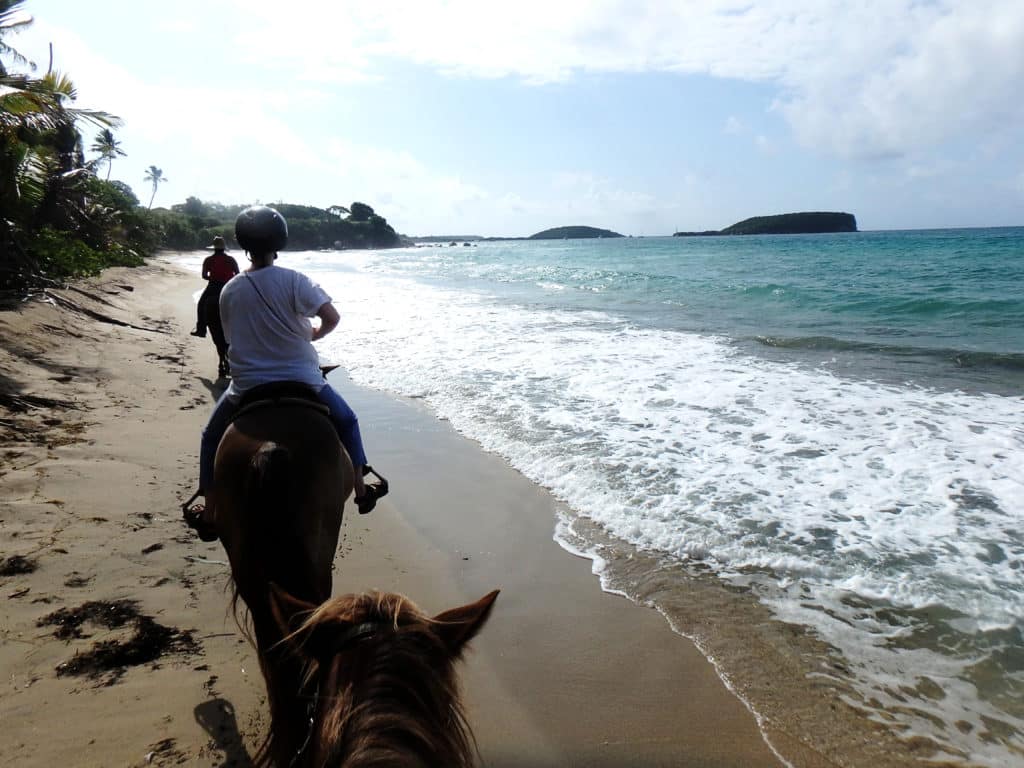
“It was a little tricky,” he said. “Some of the rocks were loose, so I had to check each handhold. It was a little bit concave, and it was very crumbly.”
“I got spooked,” said Jenny. “There was loud surf coming in, in big swells, crashing on the rocks.” Finding an easier path, they picked their way through the brush to where they could see out over the Caribbean Sea and our anchorage below. “We tried to head back down to what we thought was the slope toward the beach, picking through the brush. With maybe a quarter of the way left, all of a sudden there were mangroves poking up out of the ground.” Mangroves? Up in the hills?
They were growing out of a pond of brackish water.
“And then we heard some crashing,” Jenny said. “And we thought, That’s not normal. And all of a sudden — ppkkkkcchhooowww! — something crashed to the ground, ran right up to us, right across the ground and right across the water. It was a huge lizard!”
“An iguana,” said Hans.
“We were like, Aaaghh, that was big!” said Jenny. “But worth the whole thing.”
Frankly, after only one day in Esperanza, it was a little hard to imagine leaving this idyll. On the previous night we had visited the rooftop bar at El Blok for sunset, then for two hours after dark toured Puerto Mosquito — aka “Bio Bay” — with one of several eco-tour companies based in Vieques. The bay is renowned as home to North America’s greatest concentration of bioluminescent dinoflagellates. Though swimming and motorized boats are forbidden in the bay, kayaks are allowed, and so with our hands and our paddles we were able to paint great neon swathes through the warm water in the otherwise nearly perfect darkness of a new-moon night.
There was plenty more we would have liked to see of gently populated Esperanza and environs, including the world-class beaches named Red, Blue and Green by the U.S. military personnel who were based here until 2003. But we hadn’t even seen unpopulated Ensenada Honda yet.
Ensenada Honda — our night-four anchorage, surrounded on three sides by mangroves and a reef to the west — is a gorgeous mile-long anchorage at the eastern end of Vieques that we shared with just three other boats for the night, then had entirely to ourselves from the time our breakfast dishes were cleaned. For years, I’d been hearing that the Spanish Virgin Islands —once known as the Passage Islands — were like the British Virgin Islands 30 years ago, and it seemed like a lot of hype. But diving over the side in the middle of the night with our own private bioluminescent show around us, we were all immersed in the full proof of it.
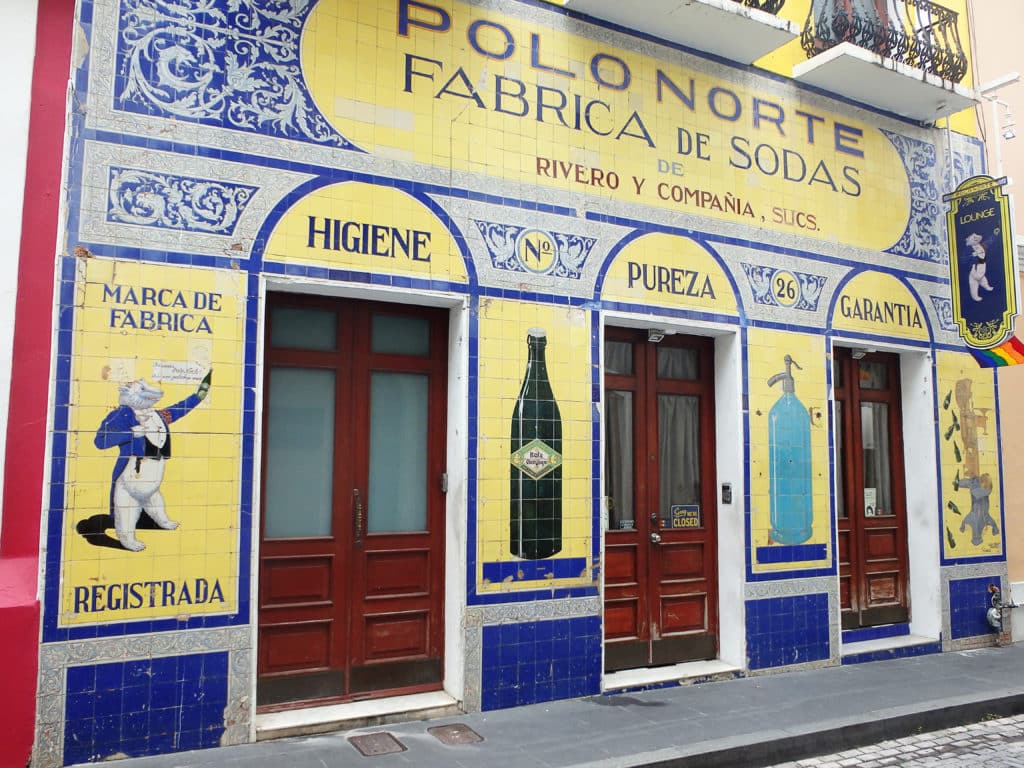
In Spanish, ensenada honda means “deep cove,” and all through the Caribbean you’ll find anchorages with that name. In our trip from Ensenada Honda on Vieques to Ensenada Honda on Culebra, we stepped from perfect seclusion back to a population center — albeit, one on island time. We anchored among a couple dozen boats off Culebra’s main town of Dewey. Dinner at the Dinghy Dock was fresh and delicious, as were the mojitos. Just upstream on the town’s canal is dockside Mamacita’s, which also came highly recommended. Groceries, fuel, car rentals and airport connections are all available here, but fresh water and pumpouts are scant.
Waking in Culebra on day five of our weeklong charter forced a choice upon us. We’d all wanted to spend a day back on the mainland, exploring San Juan and the El Yunque rainforest. But here we were in some of the most pristine waters any of us had ever seen. I considered returning to secluded Ensenada Honda on Vieques. Lesley recalled two places we hadn’t yet seen but both Luis and Jorge had recommended to us: an anchorage called Las Pelas at Culebra’s eastern end, and uninhabited Culebrita with its hiking trails and tide pools. The results of our crew-wide poll were unanimous: Give us one more day in these islands.
We weren’t wrong.
“Every day feels like we’re in the best place,” said Hans, as we rounded Cayo Botella and first glimpsed Culebrita’s Playa Tortuga. “And then the next place is even better.”
Around us in a half-mile ring, Playa Tortuga’s white-sand beach surrounded us and just three other boats, although we hear it gets more crowded on weekends or holidays. But on this Thursday, just two or three small groups of people walked the beach. After a quick lunch, we dinghied over to the Jacuzzis — four or five cascading tide pools continually filled by the rambunctious surf crashing against the rocks on Culebrita’s windward side. Looking down over the cliffs and into the frothing whirlpools below was exciting and a little vertiginous; meanwhile, the tide pools were clear and peaceful and warm enough to lounge in for hours.
Several of us hiked the hourlong trail to the lighthouse at the top of Culebrita, with its clear view of St. Thomas to the east and the whole rolling Atlantic Ocean beyond.
As perfect as we found Bahia Tortuga for a day anchorage, it was easy to see that this cove becomes a trap when the wind veers just a little north of east. So with two hours of daylight to spare, we upped anchor and sailed around to Culebra’s Las Pelas anchorage. This time, Hans didn’t even have to say it: Here was another anchorage — fully protected behind a crashing reef to windward and the full view of the horizon behind it — that was still more beautiful than the ones we’d seen before.
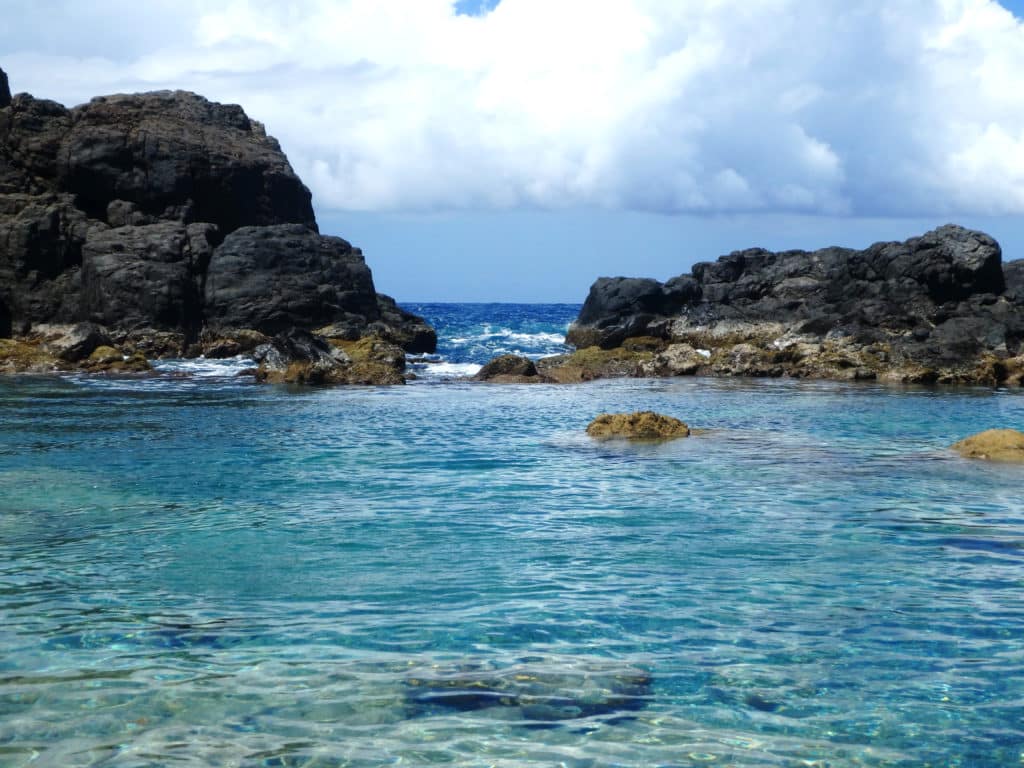
A Nice Souvenir
Friday morning in Las Pelas forced our hand. From here, we really did have to sail the 25 miles back downwind to the Puerto Rican mainland — but not without a stop at one more world-class beach: Playa Flamenco, on Culebra’s north shore. One of Culebra’s biggest tourist draws, this beach is famous for its U.S. Army tanks tagged with whimsical graffiti.
The run home delivered us our best sail of the week. Broad-reaching all the way, with 20 knots in our sails, we consistently hit speeds over 10 knots. In fact, it was Caroline, our neophyte sailor, at the helm the first time we broke the 10-knot barrier — a loud moment aboard El Golfet, with all the cheering coming from the flybridge. We were initially frustrated by the self-tacking headsail, which collapsed behind the main as we sailed these deep angles. But as soon as Hans rigged a barberhauler from the jib’s clew to the outboard midship cleat, the jib filled perfectly, and we tracked like a locomotive on rails. All afternoon, nothing but sweet sailing, even through one reef-worthy squall, bought us back to Puerto del Rey. And then, too abruptly, we were back to text messages and emails and phone calls — all the big and little stresses of home.
Two days later, still adjusting into our lives, an email came through from Lesley. “First of all, Hans,” she said, “where the hell is my cappuccino?”
Even two days on, Lesley wrote, she was still enjoying the following seas that rocked her bed in Massachusetts through the night. “That’s a nice souvenir.” Her note summed up what we all felt: “I miss the world of El Golfet.”
Through the day, we swapped photos and rehashed our favorite memories from the week and wondered how soon we could get ourselves back to Puerto Rico. Next time, we know, we’ll be traveling with less kit. All of the riches are already there. .
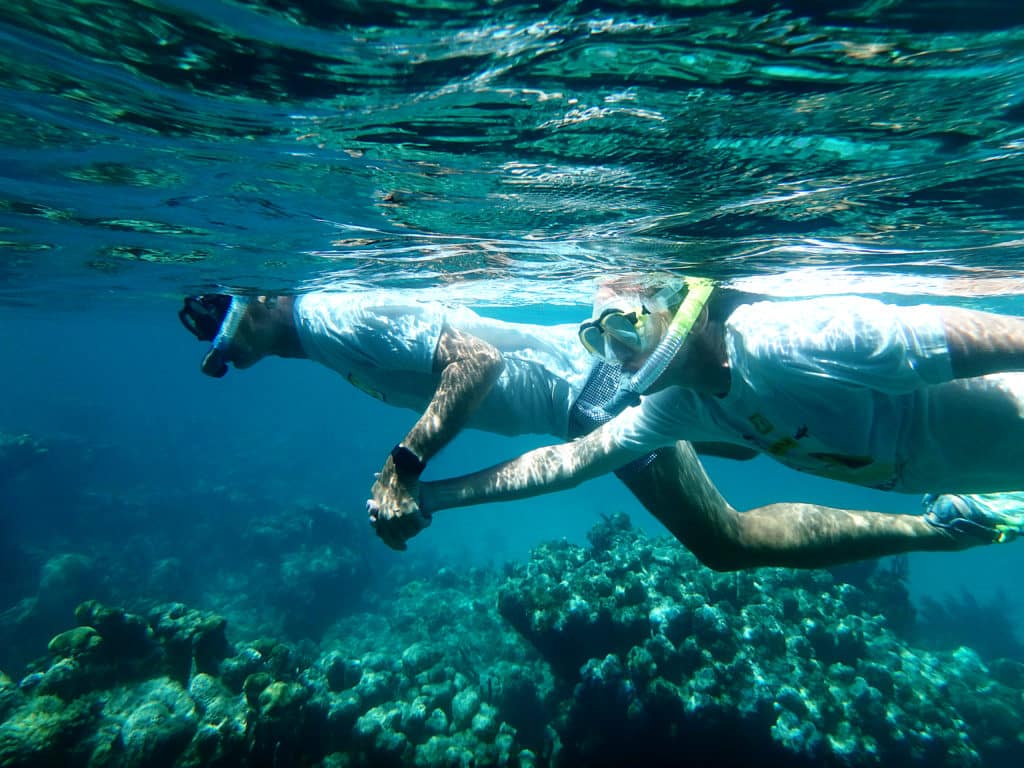
Across to Culebra
Before this trip, I had sailed a Bali 4.0 Lounge catamaran just one other time, a daysail in light air on Chesapeake Bay last fall. I’d come away with mixed feelings, particularly about the boat’s sailing performance. But a week aboard the same boat in a trade-wind setting — cooking, eating, sleeping, sailing — demonstrated just what this open-plan cat was meant to do. (See “Bring the Outdoors In,” page 87, for a full review.) It would be hard to imagine a better living layout for several unrelated people or a better platform from which to swim, snorkel and kayak.
Granted, the Bali is a high-volume 40-foot cat with a modest sail plan that under sail will always perform best when she’s cracked off the wind. The windward performance of our particular boat was further compromised by the actions of the previous charterer. When we first arrived, Luis Duprey, manager of the new Dream Yacht Charter base in Puerto Rico, dolefully recounted the conversation he’d had the day before with his counterpart in Tortola as our boat was being delivered. “I have some good news for you and some bad news.”
“OK,” said Luis. “Let’s have the bad news first.”
“The bad news is that the boat I’m sending you is missing one keel.”
“You’re kidding me!” said Luis. “What’s the good news?”
“It still has the other keel.”
Luis offered us a 50-foot cat from a different builder for our week. But we were keen to spend some time with the Bali, and once we assured ourselves that the boat was structurally sound, our choice proved justified. For starters, the keels are bonded in place with an adhesive but not through-bolted. After this boat’s grounding incident, the bond between the port keel and hull separated — but with no damage to the hull, and no penetration to allow water into the boat. Actually, the keel behaved exactly as designed. In terms of sailing performance, we did lose some of our closehauled pointing angle, particularly on starboard tack. On our two longest windward days, we motorsailed the last few miles to compensate for our wider tacking angles. But as soon as we fell off below 70 degrees apparent in the 15-to-20-knot easterly trades, the boat happily tracked along between 7 and 10 knots, and with no apparent loss in steering, leeway or boat speed.
Reaching the 8 miles across Vieques Sound to Culebra was nothing short of a joyful ride. Magnificent frigate birds, flying fish, hawksbill turtles and a pod of pilot whales all joined us for that happy romp.
Tim Murphy is a Cruising World editor at large and an independent book editor based in Rhode Island

